Abstract
We examined the effects of simulation training on the acquisition of self-catheterization skills in 2 female children with spina bifida. Based on a task analysis, the children were taught to perform on a doll each of the components of preparation, and, using a mirror to locate the urinary meatus, to insert and remove the catheter and to clean-up. Before, during, and after training, the children's performance of the skills on the doll and on themselves was assessed. Results of a multiple baseline design across subjects and skill components showed that doll training facilitated the children's acquisition of self-catheterization skills.
Full text
PDF
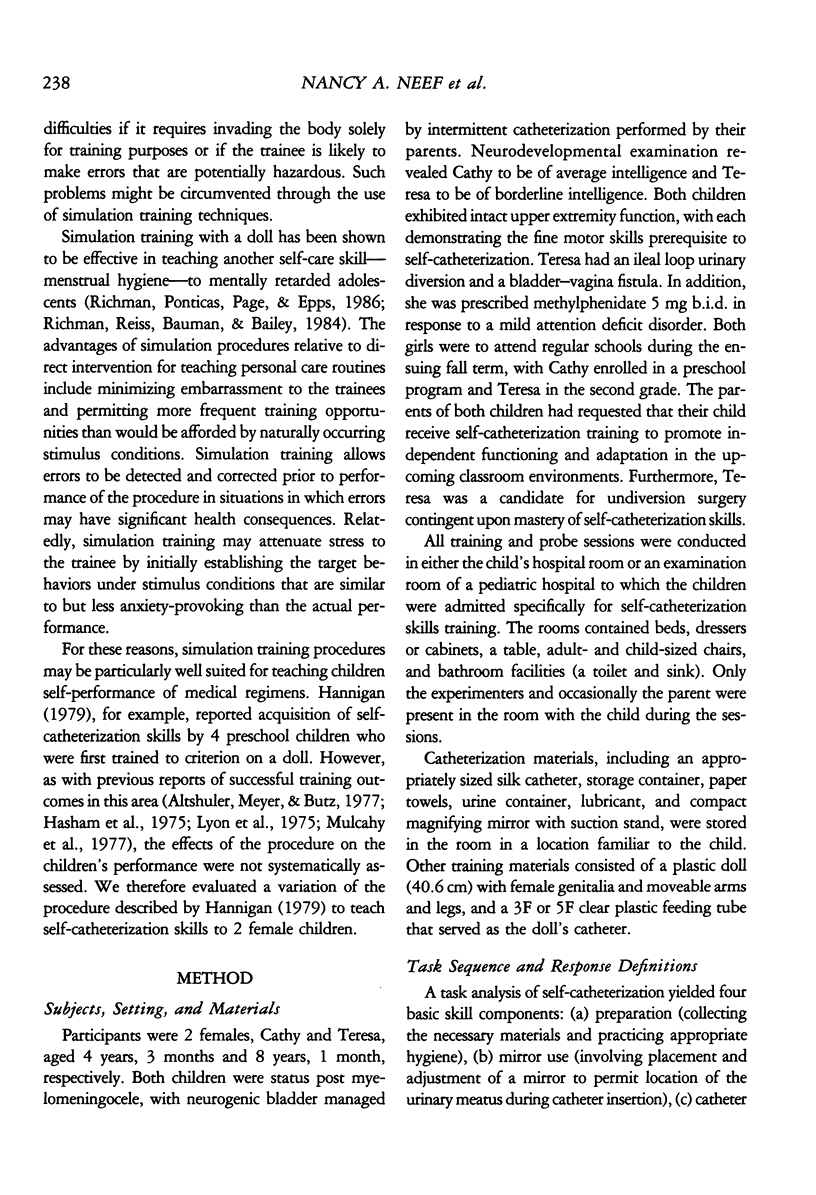
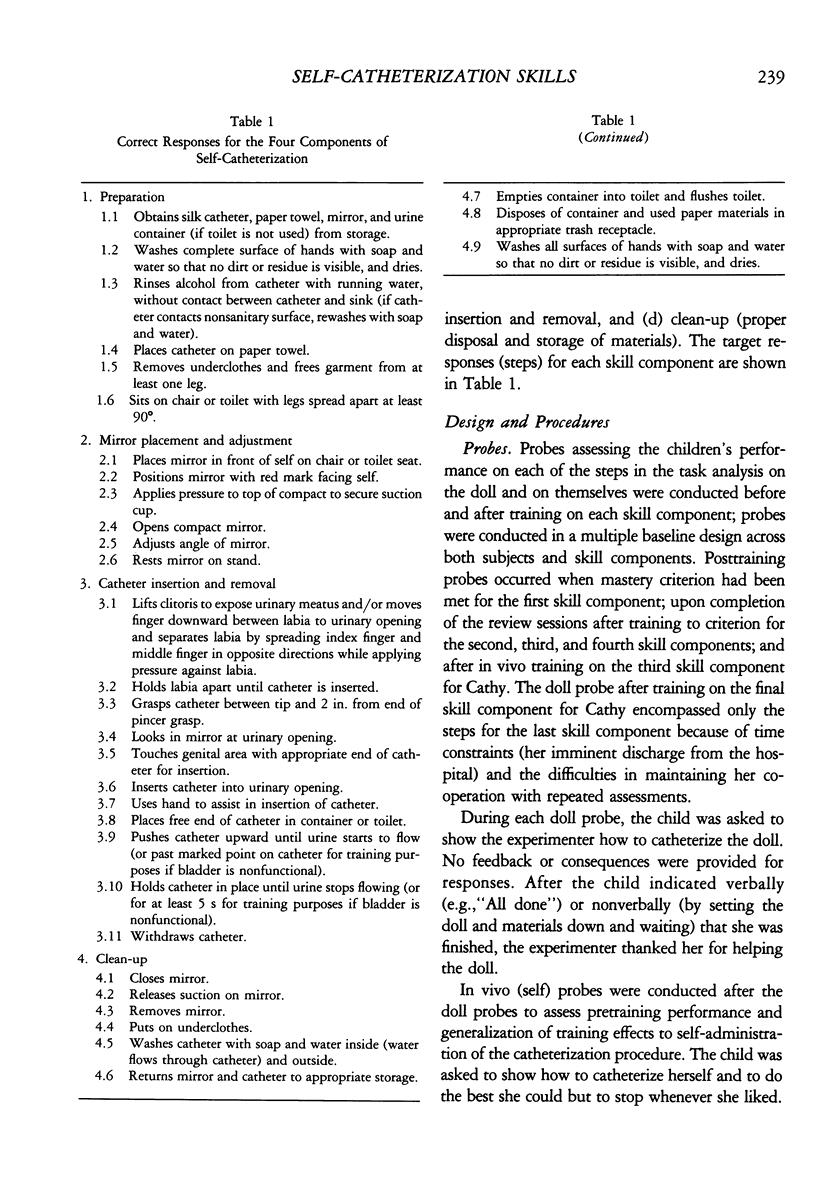
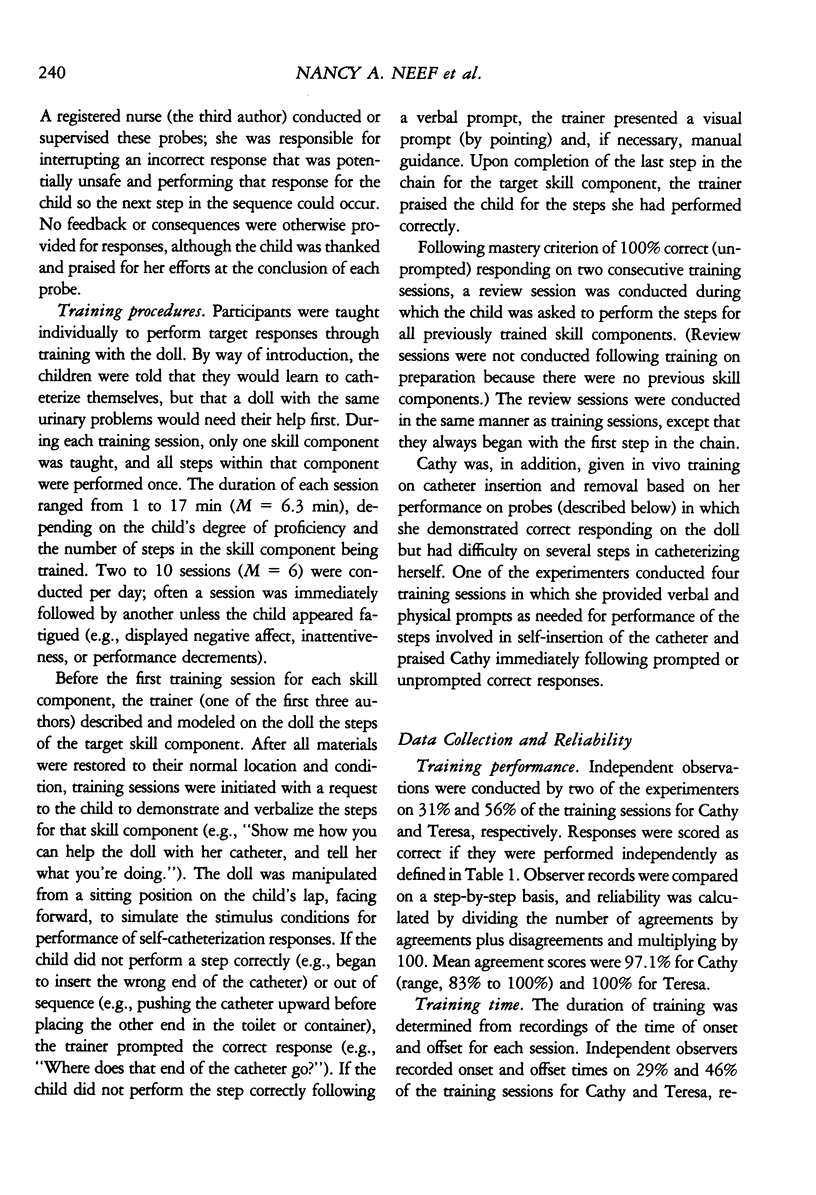
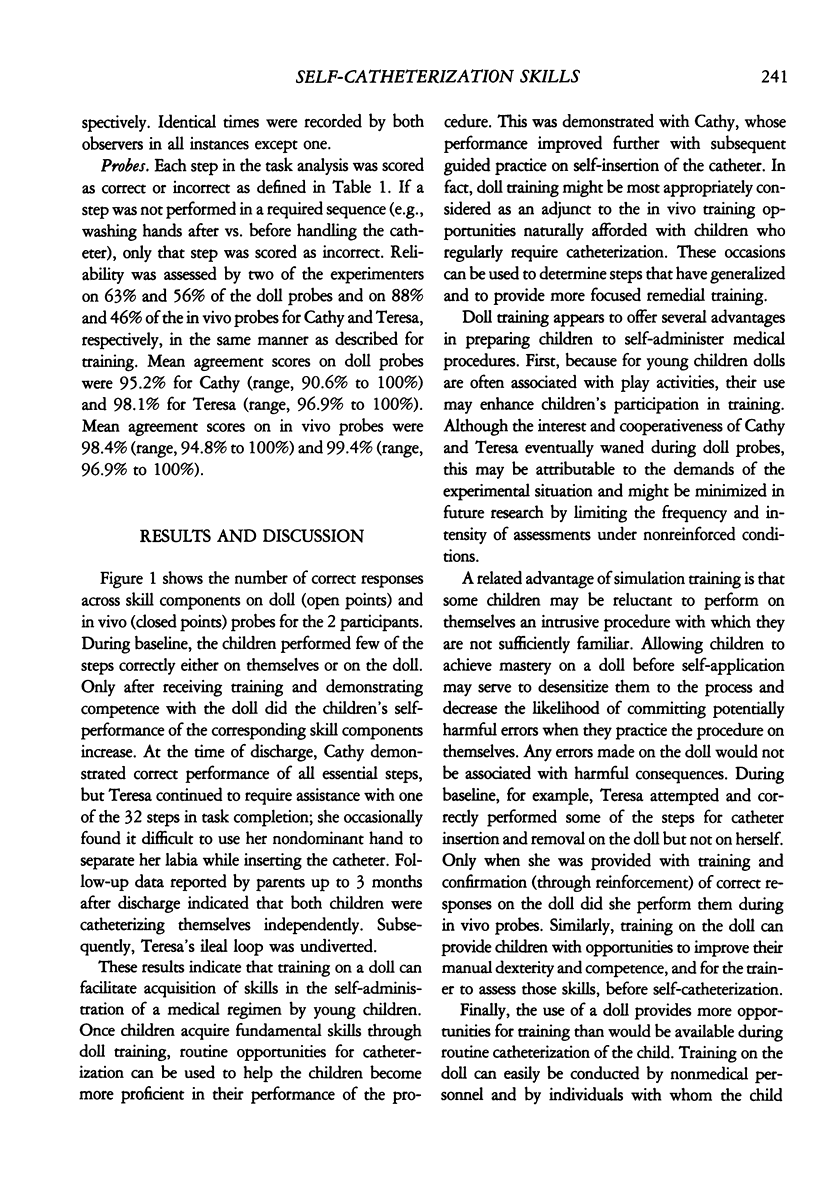
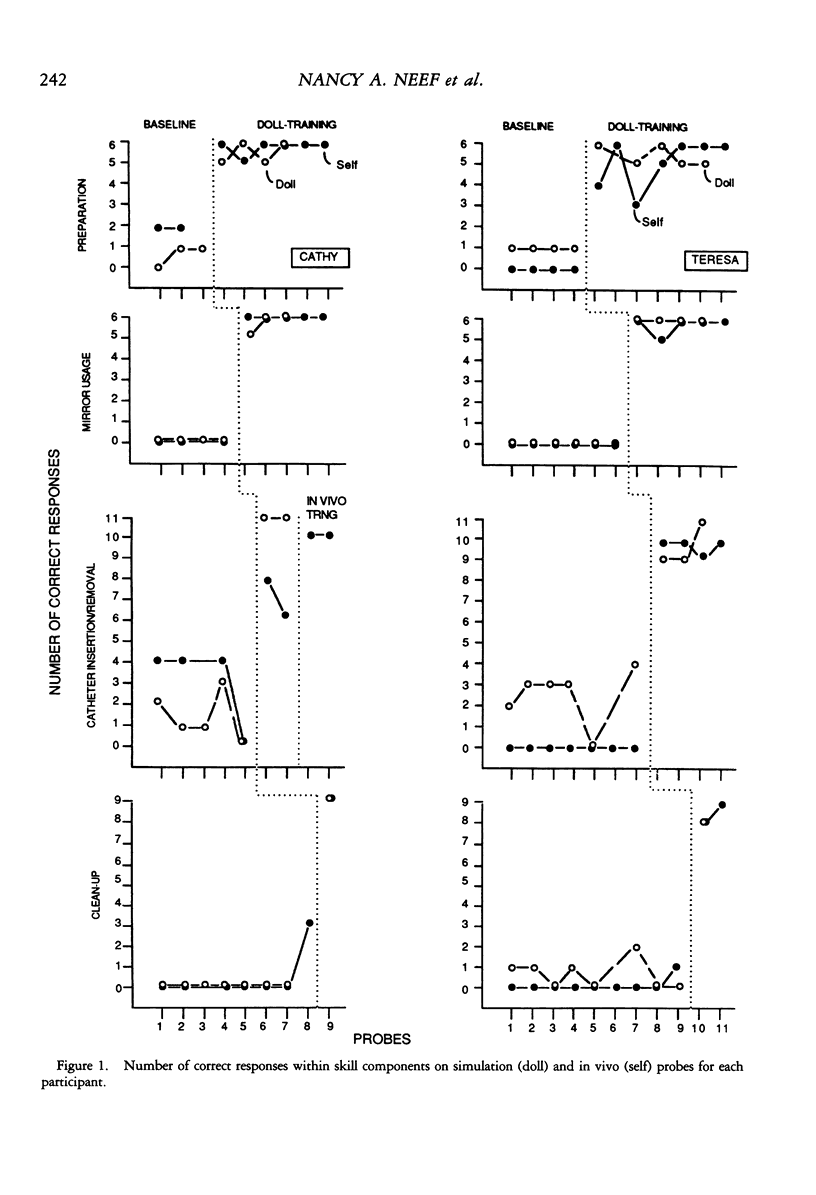
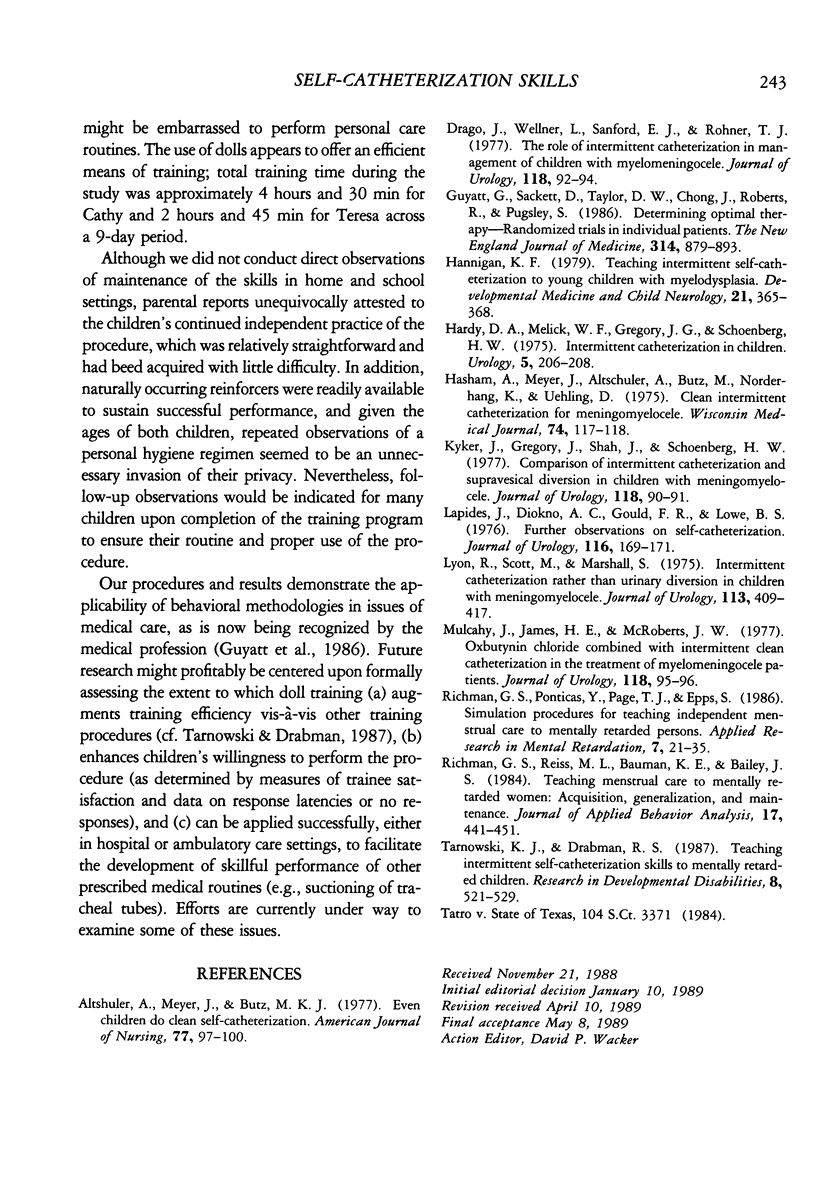
Selected References
These references are in PubMed. This may not be the complete list of references from this article.
- Altshuler A., Meyer J., Butz M. K. Even children can learn to do clean self-catheterization. Am J Nurs. 1977 Jan;77(1):97–101. [PubMed] [Google Scholar]
- Cuthbert J. A., East C. A., Bilheimer D. W., Lipsky P. E. Detection of familial hypercholesterolemia by assaying functional low-density-lipoprotein receptors on lymphocytes. N Engl J Med. 1986 Apr 3;314(14):879–883. doi: 10.1056/NEJM198604033141404. [DOI] [PubMed] [Google Scholar]
- Drago J. R., Wellner L., Sanford E. J., Rohner T. J., Jr The role of intermittent catheterization in the management of children with myelomeningocele. J Urol. 1977 Jul;118(1 Pt 1):92–94. doi: 10.1016/s0022-5347(17)57901-x. [DOI] [PubMed] [Google Scholar]
- Hannigan K. F. Teaching intermittent self-catheterization to young children with myelodysplasia. Dev Med Child Neurol. 1979 Jun;21(3):365–368. doi: 10.1111/j.1469-8749.1979.tb01628.x. [DOI] [PubMed] [Google Scholar]
- Hardy D. A., Melick W. F., Gregory J. G., Schoenberg H. W. Intermittent catheterization in children. Urology. 1975 Feb;5(2):206–208. doi: 10.1016/0090-4295(75)90011-4. [DOI] [PubMed] [Google Scholar]
- Kyker J., Gregory J. G., Shah J., Schoenberg H. W. Comparison of intermittent catheterization and supravesical diversion in children with meningomyelocele. J Urol. 1977 Jul;118(1 Pt 1):90–91. doi: 10.1016/s0022-5347(17)57900-8. [DOI] [PubMed] [Google Scholar]
- Lapides J., Diokno A. C., Gould F. R., Lowe B. S. Further observations on self-catheterization. J Urol. 1976 Aug;116(2):169–171. doi: 10.1016/s0022-5347(17)58730-3. [DOI] [PubMed] [Google Scholar]
- Lyon R. P., Scott M. P., Marshall S. Intermittent catheterization rather than urinary diversion in children with meningomyelocele. J Urol. 1975 Mar;113(3):409–417. doi: 10.1016/s0022-5347(17)59494-x. [DOI] [PubMed] [Google Scholar]
- Mulcahy J. J., James H. E., McRoberts J. W. Oxybutynin chloride combined with intermittent clean catheterization in the treatment of myelomeningocele patients. J Urol. 1977 Jul;118(1 Pt 1):95–96. doi: 10.1016/s0022-5347(17)57902-1. [DOI] [PubMed] [Google Scholar]
- Richman G. S., Ponticas Y., Page T. J., Epps S. Simulation procedures for teaching independent menstrual care to mentally retarded persons. Appl Res Ment Retard. 1986;7(1):21–35. doi: 10.1016/0270-3092(86)90015-9. [DOI] [PubMed] [Google Scholar]
- Richman G. S., Reiss M. L., Bauman K. E., Bailey J. S. Teaching menstrual care to mentally retarded women: acquisition, generalization, and maintenance. J Appl Behav Anal. 1984 Winter;17(4):441–451. doi: 10.1901/jaba.1984.17-441. [DOI] [PMC free article] [PubMed] [Google Scholar]
- Tarnowski K. J., Drabman R. S. Teaching intermittent self-catheterization skills to mentally retarded children. Res Dev Disabil. 1987;8(4):521–529. doi: 10.1016/0891-4222(87)90052-7. [DOI] [PubMed] [Google Scholar]


